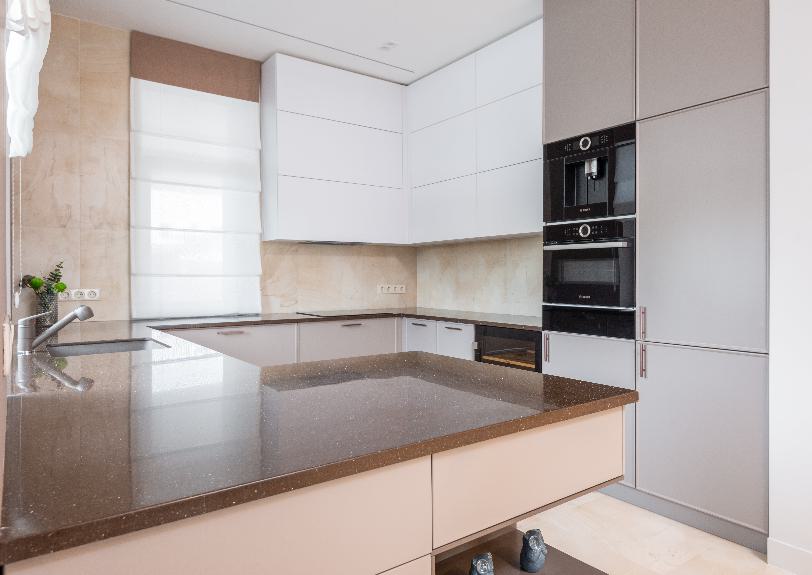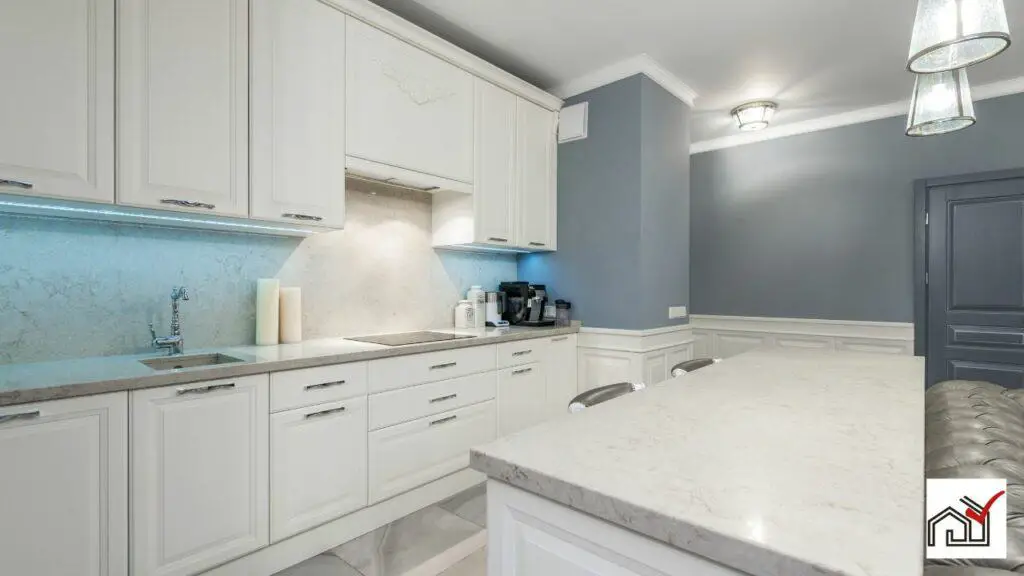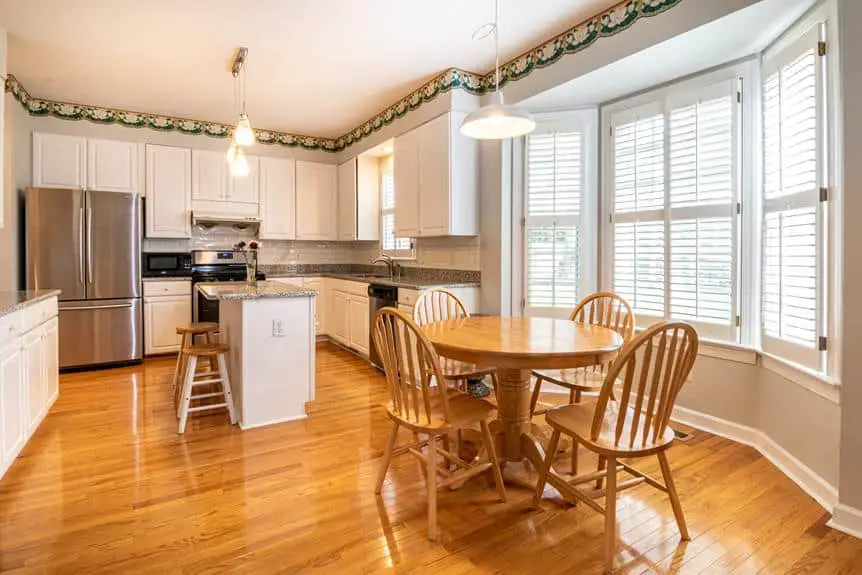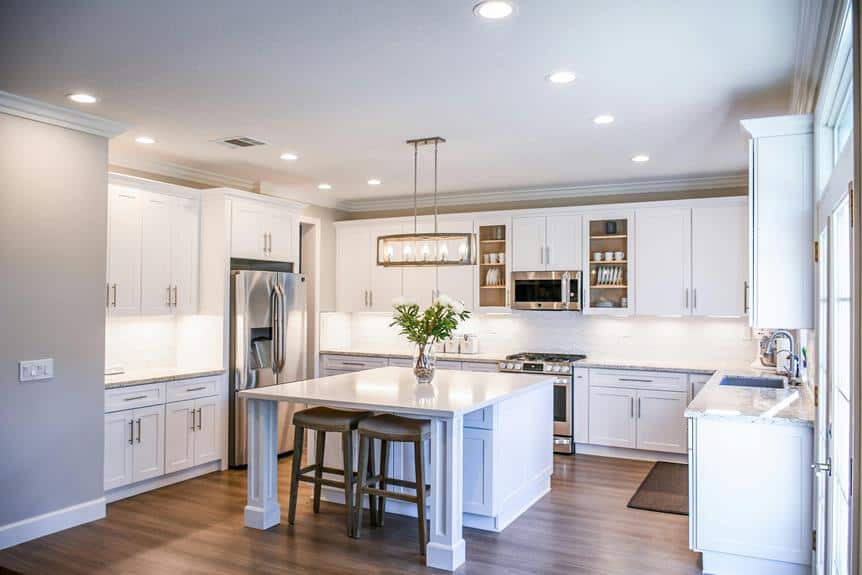In kitchen design, deciding whether the backsplash matches the countertop or the floor is important for aesthetic cohesion. A matching backsplash and countertop can create a unified look, while a backsplash that coordinates with the floor can provide contrast or tie the room together.
The decision should factor in color, material, and the combination of functionality and style. It's also vital to consider how this choice will affect the kitchen's ability to remain appealing over time.
Assessing Your Kitchen Layout
When assessing your kitchen layout, consider how the backsplash, countertop, and floor work together. The countertop and backsplash are key to the design and function of kitchens and bathrooms. A kitchen designer can advise on balancing these for both looks and usability.
Choosing the right countertop material is important. For example, granite is durable and timeless but may limit your choices for backsplash colors and patterns. A simple backsplash can complement a bold countertop, while a plain countertop allows for a bolder backsplash.
The flooring should also match the countertop, ensuring design continuity whether through color, texture, or pattern. This affects the room's overall feel.
The aim is to create a balanced space where each element complements the others, reflecting personal style and possibly increasing home value. The right combination of countertop, backsplash, and flooring can make a kitchen both attractive and functional.
Understanding Color Dynamics
Understanding color dynamics is important for kitchen design, particularly when choosing a backsplash in relation to countertops and flooring.
Colors can change how a space looks and feels. A tile backsplash can add color and texture, complementing or contrasting with other kitchen surfaces.
When selecting a backsplash, consider the countertop color. Matching tile colors with the countertop creates a cohesive look. For example, cream tiles with a beige granite countertop blend smoothly. For contrast, choose tiles in a lighter shade than a dark countertop to stand out, like a light herringbone tile against dark granite.
Use the color wheel to pick complementary or analogous colors to improve the design. There's a wide range of tile materials, including glossy glass and matte ceramics.
The choice to match or contrast depends on the visual impact you want and personal preference. Knowing color dynamics helps achieve an appealing design that reflects individual style.
Exploring Material Options
When selecting a kitchen backsplash, consider its durability, ease of maintenance, aesthetic appeal, and compatibility with existing countertops and flooring. A backsplash significantly influences the kitchen's look, complementing or contrasting with the countertop. A granite countertop, for example, can be matched with a backsplash featuring similar colors for a uniform look or contrasted with white tiles in a herringbone pattern for visual impact.
Porcelain tile is a practical choice for backsplashes, offering a wide variety of colors and patterns, including those that resemble wood, stone, or fabric. It is durable and easy to clean, making it suitable for busy kitchens. A backsplash that matches the countertop or flooring can unify the space.
The decision to match the backsplash with the countertop or flooring depends on whether you want to create a standout feature or a cohesive look. Personal taste is important, but it's also wise to consider the overall design and how it affects the kitchen's atmosphere and potential resale value.
Balancing Function and Style
A kitchen backsplash must protect walls from spills and add to the room's design. It should be durable and easy to clean, while also complementing the kitchen's style. The choice of backsplash often depends on the countertop material; for example, a granite countertop may work well with a simple backsplash, whereas marble might require a less elaborate design.
The backsplash should coordinate with both countertops and flooring. A countertop with intricate patterns may need a single-color backsplash to avoid a cluttered look. In contrast, a plain countertop can be paired with patterned tiles to add interest.
When choosing a backsplash, consider the kitchen's size and lighting to ensure it complements the space without being too overpowering. The right backsplash can make a small kitchen look bigger or add warmth to a well-lit area.
Considering Longevity and Trends
When choosing kitchen backsplash materials, it's important to consider both current trends and their lasting appeal. Trendy patterns and colors may be appealing now, but it's worth thinking about whether they will still be attractive in the future, both to you and potential buyers. Since the kitchen is a frequently used area, its design should be both contemporary and enduring.
A matching backsplash and countertop can create a classic look, while a contrasting backsplash can add character and energy if it complements the other elements in the kitchen. For example, after installing a countertop, selecting a backsplash that harmonizes with its colors and textures can achieve a look that withstands the test of time.
Homeowners uncertain about their selections should consider getting advice from a design expert. These professionals can guide on what styles may have lasting value and what may become dated, ensuring choices align with personal preferences and enhance the home's resale potential.




